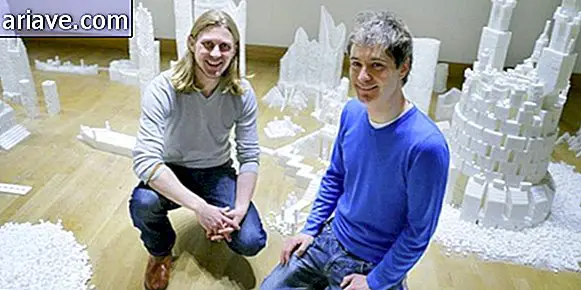5 interesting discoveries related to the bodies of Pompeii
As you may know, the Italian city of Pompeii was completely destroyed when Mount Vesuvius erupted almost 2, 000 years ago in 79 AD. It is estimated that when the volcano exploded, it released 100, 000 times more heat than released by the Hiroshima atomic bomb - killing thousands - and burying the town and its inhabitants under a thick layer of ash and rocks.

Pompeii remained forgotten for about 1, 600 years under more than 20 feet of material until the late 16th century, when architect Domenico Fontana discovered the ruins. Excavations at the site began in the 18th century, but it was not until 1860, when archaeologist Giuseppe Fiorelli became director of operations that the findings began to be properly documented.

In fact, it was Fiorelli who realized that there were spaces between the layers of ash containing human bones - and that these cavities corresponded to the voids left after the corpses disintegrated. Want to know more interesting things about Pompeii and its inhabitants? Then check out the curiosities we have gathered for you below:
1 - Plaster and bones
As we have just commented, Fiorelli realized that the spaces containing bones had been created by the corpses of the ancient inhabitants of Pompeii. The archaeologist then developed the technique of recreating the charred victims by pouring plaster into these "hollows." Thus, contrary to what many people think, the bodies that can be seen today are not really the corpses of the people who died during the eruption.

Another common belief is that these “dummies” are made of plaster only. However, when this material was injected into the cavities - in order to preserve the victims as archaeological evidence - several of them still contained bones and they eventually became encapsulated.
2 - Positions of the victims
When archaeologists began designing plaster models, they realized that many of the victims were in a fetal position - a common position adopted by people who die of asphyxiation. Thus, one of the initial theories about how the inhabitants of Pompeii perished was that many must have choked on the overflowing gases that hit the city during the eruption.

In addition, archaeologists argued that many inhabitants who sought refuge in houses and buildings were crushed to death when these structures collapsed in the rain of rocks and ashes. However, researchers nowadays believe that the end of the victims was actually much faster - but no less dramatic!
When Vesuvius erupted, in addition to ash and rocks, the city was hit by what scientists call a “pyroclastic explosion, ” that is, gusts of superheated gases that, in addition to killing the victims, caused their muscles to clench. contract instantly due to extreme dehydration - hence the fetal position of so many of them. Cracks in many of the bones (possibly caused by heat) support this theory, as does the fact that numerous individuals have been found in more casual positions.
3 - Cosmopolitan City
Another interesting finding related to Pompeii is that, contrary to popular belief, the population was quite diverse. One individual in particular, named “Celtic Gaul” because of his great stature and the way he was dressed when he died, is an example of this.

Indeed, it has long been debated whether this man would be a slave, since the Roman Empire used to enslave its enemies. However, during the 1st century, Pompeii was an important trading hub, and merchants from across the Mediterranean visited the city and even moved there.
DNA analysis conducted on the bones revealed that Pompeii housed people from Gaul, Greece, and other Mediterranean regions, meaning that it was a very cosmopolitan city. In addition, the locality had a respectable community of libretti, that is, of former slaves who gained their freedom and made their living there.
4 - Daily life in antiquity
While the remains discovered in Pompeii revealed many aspects of how the population died, the analysis also allowed scientists to discover many fascinating things about their daily lives. The researchers concluded, for example, that the inhabitants were on average taller than the Italians living in Naples today.

Archaeologists also found that while there is a belief that people of the past did not live long enough, there were a good number of middle-aged and elderly individuals in Pompeii. In fact, childhood seemed to be the most critical phase, because of all the diseases for which there was no remedy at the time.
More interesting discoveries about Pompeii's population: most had excellent eating habits, used to have a physically active life, and had virtually perfect, caries-free teeth. This makes sense, since processed foods did not exist at the time, and diets were rich in protein, fruits and fiber - and no sugar - not to mention that the proximity of the volcano made fluoride levels in the air and in the highest water.
5 - Summer or fall?
According to reports left by Pliny the Younger, the eruption that destroyed Pompeii would have happened in August of the year 79, that is, in the middle of European summer. However, after carefully examining the victims, archaeologists argue that, in fact, the tragedy caused by Mount Vesuvius may have occurred in the late fall of that fateful year.

The researchers came to this conclusion after analyzing fibers from tissues discovered by the dead and finding that they were much thicker and heavier materials than people would use during the summer heat. Therefore, it makes more sense that the eruption occurred later in the year, during the colder months, rather than in August.
***
Did you know that Curious Mega is also on Instagram? Click here to follow us and stay on top of exclusive curiosities!











